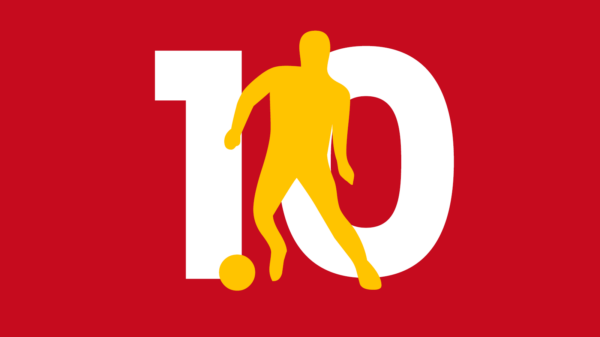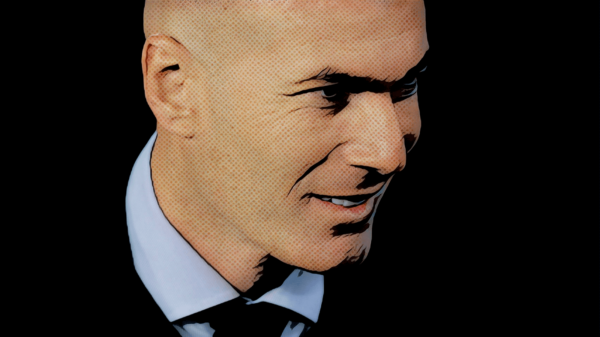
Usually, there would be 1 or 2 set shapes for teams to operate in come start of the season,however this is not the case under Nuno Espirito Santo. A 4-3-3 and 4-2-3-1 may differ in movements of a single player (and pressing schemes) yet a 2-striker system under Nuno – sporadically seen last season – is a major possibility with the permanent import of Liga veteran Negredo.
However, let this not deviate your mind away from the basis. “What matters is the style of play, not the distribution of players onto the pitch”, while not entirely true, Nuno forms a great argument from his stance.
Tactical Aspects
Pressing:
With the team now at Nuno’s full disposal and depth in central midfield and attacking midfield, we may see Nuno’s pressing ideas take place from the beginning. Valencia press in a man-oriented version of zonal marking mixed with a slight touch of space-oriented form of pressing.
An exemplar of this situation was against Real Madrid last season at the Mestalla, where Kroos was left open in Madrid’s build-up play. This was a trigger for Valencia, as 5 players were in the vicinity to vociferously press Kroos. Nevertheless, the basis of their pressing worked as a forced long ball from Casillas led to an orthodox aerial duel that Otamendi/Mustafi won (they both won 65% and 63% of their aerial duels, respectively, last season).
Transitional Play:
Valencia proved in vital stages that they could change the tides and become the ‘antagonist’ with wins over the Madrid duo providing a benchmark to their season. Their speed going forward and their energy going back are assets that are not often found in football within a group of players. The question is despite their energy going back is the team’s positioning within the system Nuno has applied to the team.
Centre back Mustafi, with all his advantages, comes with flaws such as timing of press and teammate access. A team with the quality of Eibar managed to make use of this situation, drawing 3 (!) players to their left winger on the attacking transition before he squared the ball to his onrushing teammate, helping Eibar narrow Valencia’s lead. Surely, to play for a Champions League challenging team the defenders must limit their individual tendencies or mistakes that can lead to the destruction of arguably the most important zone of the game: the central defending zone.
Wide creativity:
It is not often you see teams create from the flanks in modern day football. Sure, playmakers are being drifted out to the flanks (only to drift back inside) however the main emphasis is on the half spaces and the centre of the pitch. When you have players like Jose Gaya, Pablo Piatti and Sofiane Feghouli (and the recent additions of Rodrigo and Zakaria Bakkali) it isn’t surprising to see the usage of the flanks in the creative aspect of Valencia’s game.
Yet despite their quality in these areas of the pitch, it is a known fact that crossing results in the most ineffective way of creating chances – a more desperate move. Yet with specifically Gaya’s gifted crossing ability, Nuno aims to make use of such assets. However, this leads to a weaker central orientation. Javi Fuego, the anchor man, and Dani Parejo provide steel, circulation and (the latter) drive. Andre Gomes, creative yet inconsistent, was Valencia’s only piece of vision and line breaking passes.
The addition of Bakkali will not offset that, however Danilo brings in a bundle of all-round abilities that can provide an upgrade on the underrated exploits of ageing Javi Fuego. Unfortunately, Santi Mina doesn’t provide creative instincts either (a more powerful, hard working addition to aid in the pressing up front). With Joao Cancelo (an upgrade on Barragan at right back) brought in permanently, we may see an increased use of crossing, touchline runs and wide play.
Direct play:
Otamendi specialised in bringing the ball directly to his forwards who can either a) receive the ball in between the lines or b) flick-on for an onrushing teammate in space. The similar happens with the full backs to the wingers, where the ball can be released into space through a long (calculated) ball or a couple of combination passes before dribbling into the final third. With his imminent departure though, this task might fall to his replacement, or his erstwhile partner, Mustafi.
These are all different aspects of what to expect at Valencia next season, yet it is the main thing holding them back:
Nuno has failed in excelling at one main part; getting his team to become a force centrally and create chances against smaller teams, more defensively oriented teams. Their ability to break teams down has become a topic of concern. They defeated both Madrid teams through set pieces and long balls directed to distract the opposing goalkeeper, rarely through domination in open play.
It seems a distant thought, Valencia defeating Monaco to arrive at the group stages. Monaco, one of the best defensive teams in the world will arguably be Nuno’s hardest task. Dani Parejo’s long shots are key, extremely key to defeating Monaco after a series of moves that create synergies between the players and havoc across the Monaco midfield.
Written by Hamoudi Fayad
- Hipster Guide 2016-17: Bayer Leverkusen’s tactics, key players and emerging talents - August 25, 2016
- Talent Radar: Saudi Pro League 10 Young Players (U-23) to Watch in 2016-17 - August 23, 2016
- Dry Grassroots: Youth Football Deficiencies in Western Asia - July 19, 2016



























































